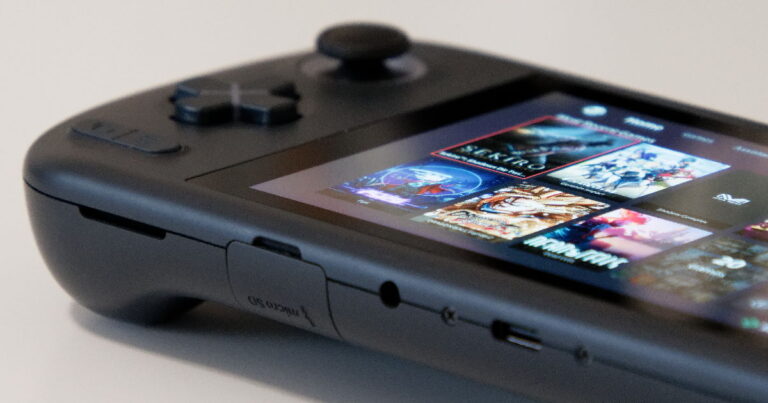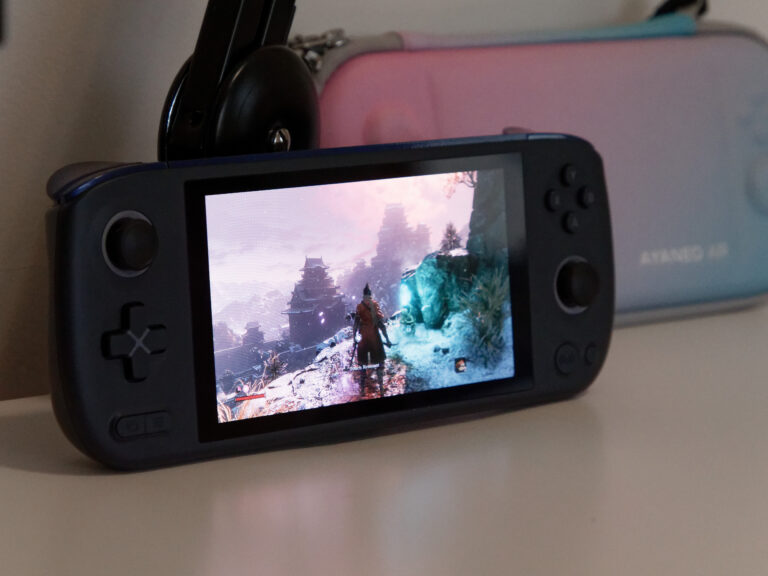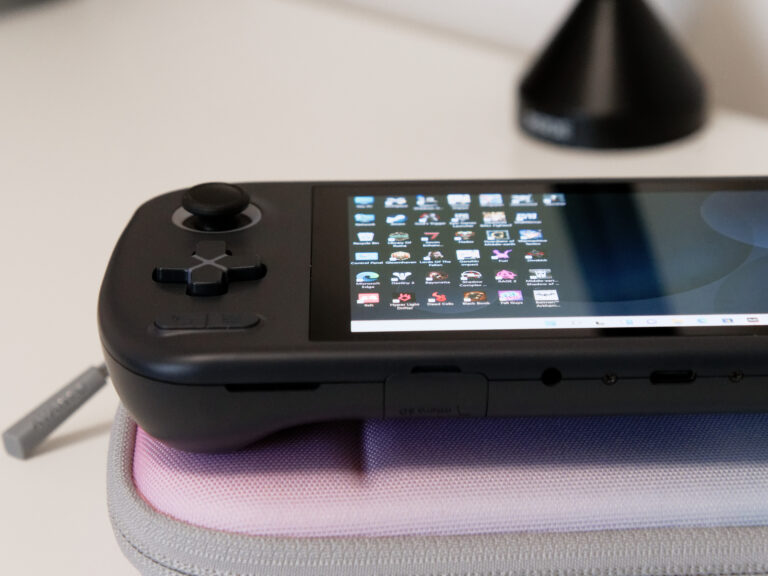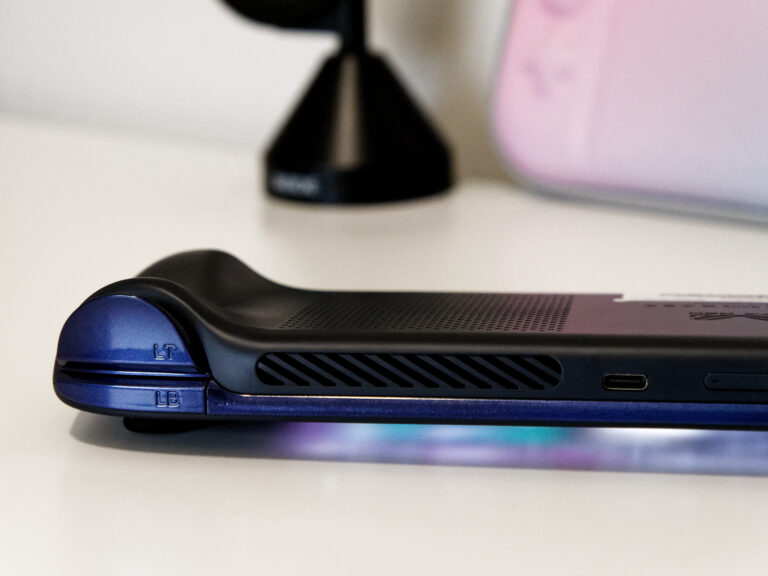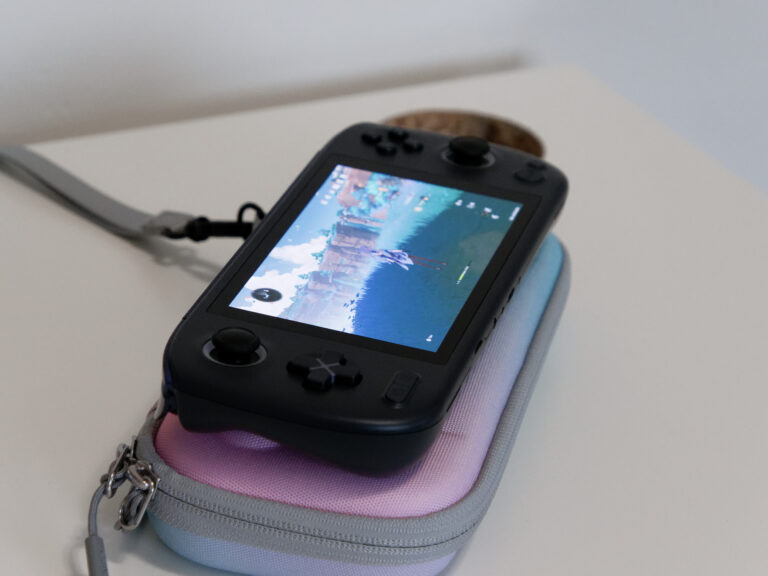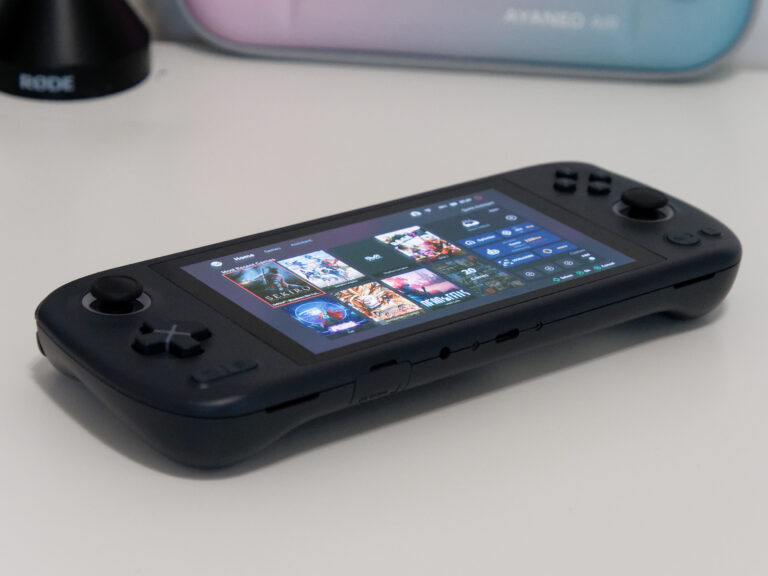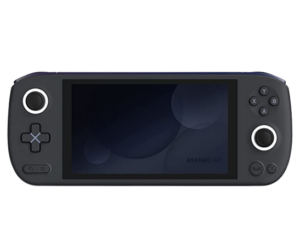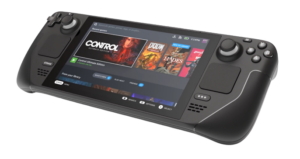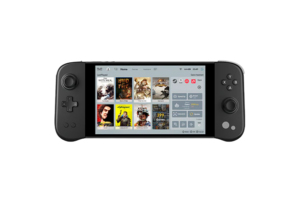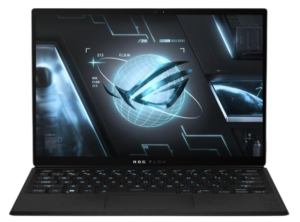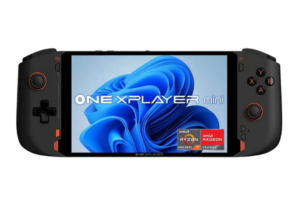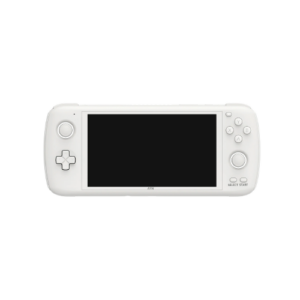Optus Mobile Review ALDI Mobile Review Amaysim Mobile Review Belong Mobile Review Circles.Life Review Vodafone Mobile Review Woolworths Mobile Review Felix Mobile Review Best iPhone Plans Best Family Mobile Plans Best Budget Smartphones Best Prepaid Plans Best SIM-Only Plans Best Plans For Kids And Teens Best Cheap Mobile Plans Telstra vs Optus Mobile Optus NBN Review Belong NBN Review Vodafone NBN Review Superloop NBN Review Aussie BB NBN Review iiNet NBN Review MyRepublic NBN Review TPG NBN Review Best NBN Satellite Plans Best NBN Alternatives Best NBN Providers Best Home Wireless Plans What is a Good NBN Speed? Test NBN Speed How to speed up your internet Optus vs Telstra Broadband ExpressVPN Review CyberGhost VPN Review NordVPN Review PureVPN Review Norton Secure VPN Review IPVanish VPN Review Windscribe VPN Review Hotspot Shield VPN Review Best cheap VPN services Best VPN for streaming Best VPNs for gaming What is a VPN? VPNs for ad-blocking Enter: the Ayaneo Air. Ayaneo isn’t exactly a household brand, but the company has quickly made a name for itself over the past year with a slew of handheld gaming devices. First there was the Ayaneo 2021. Then, there was the Ayaneo Next. Now, there’s a thinner and lighter spin on the formula available in the form of the Ayaneo Air. That’s a lot more than what you’d pay for a Nintendo Switch, but a lot less than what you might pay for a gaming laptop. It’s also more than you might end up paying for a Steam Deck on eBay, though your mileage may vary with that one. In addition to the standard layout of D-pads and joysticks, the Ayaneo Air also boasts a dedicated minimize application key, two multi-function buttons that act as start and select buttons and a shortcut used to call up the Ayaneo Space app when needed. The bottom-most edge of the Ayaneo Air is where you’ll find the headphone jack, Micro SD slot and a USB Type-C port. That last one can be used either for charging or connecting the Ayaneo Air to another accessory. Flip over to the opposite edge of the Ayaneo Air and you’ll find a power key with an integrated fingerprint sensor, volume keys, a heat vent, a second USB Type-C port and a set of shoulder buttons used during play. The back of the Ayaneo Air is curved in a way that provides better grip. However, it makes for a stark contrast to the back of its biggest inspiration. Where the Switch Lite is seamless, the Ayaneo Air is marked and marred by a grille-style heating vent. Even if it’s arguably necessary, it’s the first of many reminders that what you’re holding is less of a portable console and more of a handheld gaming PC. Under the hood, Ayaneo’s lean handheld rocks a Ryzen 5560U processor, 16GB of 4266Hz RAM and 512GB of SSD storage. Rather than run on the Linux-based SteamOS (as the Steam Deck does) or opt for something more proprietary like the software powering the Nintendo Switch, the Ayaneo Air opts for something simple, familiar and yet perilous. It runs on Windows 11. From this detail is borne a pocketful of pros and cons, but for now, the main upside is that the process of getting it set up should be fairly intuitive to most. Once you unbox and charge up the Ayaneo Air, the process of setting up the handheld is identical to that of any modern Windows laptop. Hidden just out of sight, the same advances in portable processing power and integrated graphics that have made modern gaming laptops thinner and lighter have paved the way for portable gaming handhelds like the Ayaneo Air and Steam Deck. Sans a keyboard, full-sized display and dedicated graphic gears, you’d be surprised how small and powerful a gaming PC can be. Alongside the fact that it runs on Windows, the fact that the Ayaneo Air is a gaming PC in disguise encompasses both everything that’s great about it…as well as everything that doesn’t quite work. Let’s start with the positives. So long as it falls within the performance range afforded by the specs here, the Ayaneo should be able to install and run basically runs anything that a Windows-based PC would. It doesn’t matter if a given game is available on Steam, the Epic Games Launcher, GOG or Itch.io. If it has controller support and falls within the capabilities of the Ryzen Mobile silicon involved, it should run on the Ayaneo Air. This means that the library of stuff you can play on the Ayaneo Air is huge and sprawling in a way that even the Switch can’t match. You don’t have to wait for your favourite developer to get around to porting or optimising a title for the Ayaneo Air. If it’s on PC and you already own a copy of it, then it’ll probably run on the Ayaneo. As a natural extension of this, one of the most fun parts of reviewing the Ayaneo Air was delving into the depths of my Steam Library and throwing random titles at it to see how it fared. I’ve been building up a library of games on Valve’s digital storefront for more than a decade, and there’s tons of stuff on there that I’d love to revisit or try for the first time in a form-factor like this. Arguably, short of emulation, this is probably one of the best use cases for the hardware here. I found that games of the Playstation 4 generation and older could run at a clean 60FPS at 1080p, more recent titles could often only manage 30FPS even when clocked down to 720p. Older titles like Batman: Arkham Origins, RAGE 2 or Middle-Earth: Shadow of Mordor looked and ran well such that I could easily imagine revisiting them using the Ayaneo. Meanwhile, indie titles like Black Book, Gloomhaven and Fall Guys also looked great on the Ayaneo’s OLED screen. Fighting games like Dragonball FighterZ looked particularly gorgeous and loaded significantly faster than the Switch version of the game to boot. Even if cinematic AAA experiences like Death Stranding or Cyberpunk 2077 struggled with the hardware here, less-demanding live service titles like Genshin Impact, Elder Scrolls Online and Destiny 2 were entirely playable on this thing. Like the Nintendo Switch and (to a lesser degree) Valve’s Steam Deck, the central appeal of the Ayaneo Air is the ability to squeeze in a quick bit of gaming on the go or from somewhere that isn’t your desktop PC or living room-based console. While the limitations and caveats are never far from mind, this third-party device will let you realise much of that ambition. But where the portable gaming experience of the Nintendo Switch is clean and standardised, so much of the Ayaneo Air feels like duct tape and dice-rolls. Yes, anything that runs on a PC could conceivably run on this thing. Unfortunately, there are frequent moments of slippage where a menu doesn’t quite load, you click on the wrong thing or a given game doesn’t have good or only partial controller support. The Steam Deck’s fix to this is the ability to easily import custom control profiles. Unfortunately, the Ayaneo Air has no such equivalent. The only thing worse than troubleshooting a PC game is troubleshooting said game on a 5.5-inch touch screen. The Ayaneo Air can often require a frustrating amount of nitpicking around to get it to play the thing you want it to. Sometimes, controller support for a given game might not play nice with the buttons on the handheld or require a mouse for specific menu navigation. Other times, a game might refuse to recognise the shortcut that allows you to bring up an on-screen virtual keyboard. In these cases and others, you’ll probably have to find a solution for yourself or find something else to play. The fact that the Ayaneo Air lacks the trackpad-like inputs seen in the Steam Deck hurts the experience of using it much more than I expected. Worse still, it doesn’t help that the Aya Space app itself is often buggy and less useful than you’d hope it would be. In theory, it provides a great cross-platform way to collate your gaming collection and tinker with the performance settings of the Ayaneo Air. In practice, it often ends up feeling like yet another game launcher added into the mix. A freakish hybrid of settings menus and shortcuts rather than a more elegant inclusion. The built-in rumble functionality offered by the Ayaneo Air is another feature that frequently feels like more trouble than it’s worth. It rarely added all that much to the experience. In some situations, it actively detracted from it by distracting me from whatever I happened to be playing. Annoyingly, this was far from the only distraction in the mix. While more intensive titles did cause the Ayaneo to heat up, the whirring of the fan proved much more annoying than any thermal accumulation. It’s not the noisiest fan on a PC I’ve ever encountered, but it’s easily on par with the one inside the Nintendo Switch at peak volume. Last but not least, there’s the battery life. While the bar for battery life in a handheld like this one isn’t huge, the Ayaneo Air really struggles against it. Your mileage is going to vary hugely here. With more intensive or modern titles, you might struggle to eke out a solid 60-90 minutes of continuous play. Naturally, indie titles proved to be less demanding on the pint-sized power source inside the Ayaneo Air. However, at that point, the difference between this and a Nintendo Switch feels even smaller. It really depends on the game, and whether or not a good port for Nintendo’s handheld exists. Even at its best, I found the battery life of the handheld to be a constant source of anxiety. It might be able to compete with the Switch for portability inside the boundaries of your home, but it’s utility fares far worse once you go outside the security blanket of knowing you can plug it into a charger whenever you need to. This model is almost identical to the Ayaneo Air in design, with a handful of exceptions. The first is that it isn’t available in a pink colour variant. The second is that it starts at 512GB of SSD storage. The other important detail worth noting is that it has a slightly higher max wattage of 18W rather than 15W. While this does give the Pro version of the Ayaneo a little more thermal headroom, the performance difference between it and the standard model shouldn’t be huge. The question becomes what you’re willing to put up with in order to play the PC games you want to play on the go. As much as I liked the freedom to play PC games in this form-factor, it didn’t take long to run up against the edges of what the Ayaneo Air can offer. It’s not hard to wish for a little more performance, cleaner software or longer battery life. If you fall into any of the above camps, it might be best to wait and see what the inevitable follow-up looks like or even hold out hope that the Steam Deck might eventually make it to Australia. The Ayaneo Air is perfect in a pinch, but frighteningly fraught in other situations. It’s a lean handheld with hard limits, but destined to delight those who do their research before buying one.
